Etobicoke's coat of arms could be scrapped over concerns about anti-Indigenous stereotypes
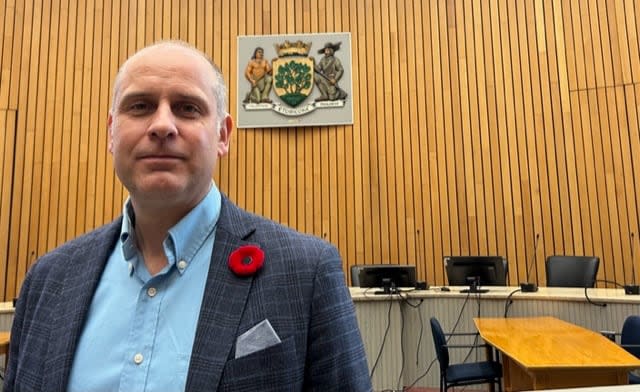
City staff are looking to scrap Etobicoke's official coat of arms on the grounds that it perpetuates anti-Indigenous stereotypes, CBC Toronto has learned.
The emblem includes an Indigenous figure kneeling above a banner that reads "tradition," facing a European explorer, who's kneeling above the word "progress."
"Concerns were raised by city staff and members of the public about the outdated, stereotypical imagery of an Indigenous person that can be considered cultural appropriation," city spokesperson Russell Baker said in an email to CBC Toronto.
"Engagement with several city divisions, including the Indigenous Affairs Office and People & Equity...determined that the coat of arms does not reflect the city's values of reconciliation and inclusion."
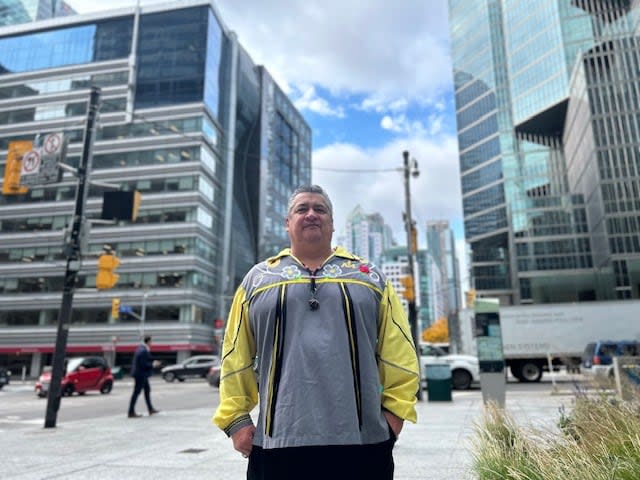
Chief Stacey Laforme of the Mississaugas of the Credit First Nation says he finds the imagery on the coat of arms disturbing. He's calling for a public discussion to resolve the issue. (Mike Smee/CBC)
Etobicoke's coat of arms controversy began in 2019 when several members of the community suggested to city staff and politicians that the Indigenous figure was drawn in a way that could be considered a racist caricature, according to Coun. Stephen Holyday, chair of the Etobicoke York community council.
The issue wasn't pursued by staff or politicians then, he said. But recently there have been renewed complaints from staff at the Etobicoke Civic Centre and members of the public that prompted staff to re-examine the issue, Holyday said.
Toronto City Manager Paul Johnson responded by opting to have the coat of arms removed from two prominent spots — in the centre of the council chamber at the civic centre and from a window above the door to an adjacent meeting room.
"The city acknowledges the harm and pain this imagery may have caused to staff and Indigenous community members," Baker said in his email. "Removing the coat of arms from this location will contribute to creating a safe and inclusive space for members of the public and city employees, which is a top priority."
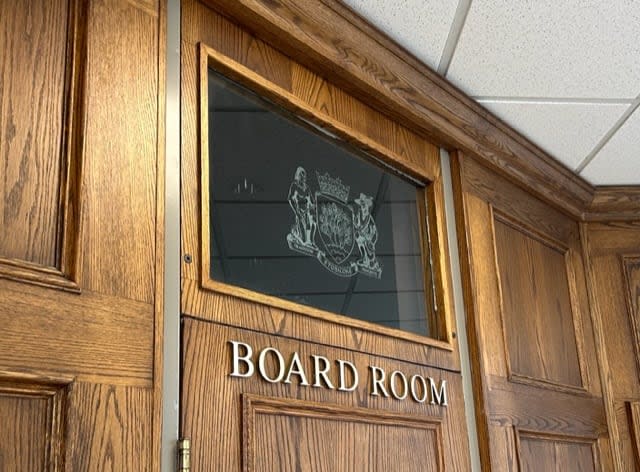
The window above a meeting room door at the Etobicoke Civic Centre is one of two places that staff have identified as locations that will soon lose the coat of arms. (Mike Smee/CBC)
But Holyday, who represents Etobicoke Centre on city council, has countered with a motion to be presented at the Nov. 8 council meeting, calling for a pause in the city manager's plan until staff can report to council on the origins and meaning of the coat of arms.
His motion calls for that report to be presented to council by the end of the year.
"There's deeper meaning here," Holyday said. "And the meaning that I don't want to lose is an earnest effort by the city of Etobicoke back in 1977 to recognize the Indigenous history on this land."
Holyday says he has researched the origins of the coat of arms and he's come to the conclusion that it represents the peaceful co-existence of Indigenous people and Europeans in Etobicoke.
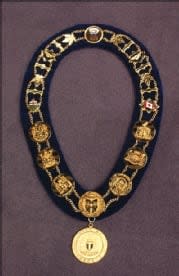
The controversial coat of arms is also found on the City of Toronto mayor's chain of office. It's on the right side, third from the bottom. (City of Toronto)
Chief Stacey Laforme of the Mississaugas of the Credit First Nation was one of those who raised concerns about the coat of arms in 2019. He told CBC Toronto on Oct. 27 that he finds the language on the coat of arms and the imagery disturbing.
But he said he'd like to see a public discussion about the issue before any decisions are made about its future.
"I think we should sit down and have a conversation and see if there's something we want to do together to change it, to make it more acceptable," he said.
Baker says in his email that the coat of arms only exists in the two prominent spots a the civic centre. He also says the coat of arms was only relevant from 1977, when it was created by the old Borough of Etobicoke council, until 1998, when Etobicoke was absorbed, along with the other four adjacent municipalities, into the City of Toronto.
Holyday challenges both those ideas.
He says the coat of arms exists in "thousands" of places, including the letterhead on many of the municipality's older documents. He also says it's found within the Kipling subway station and even on the Toronto mayor's chain of office.
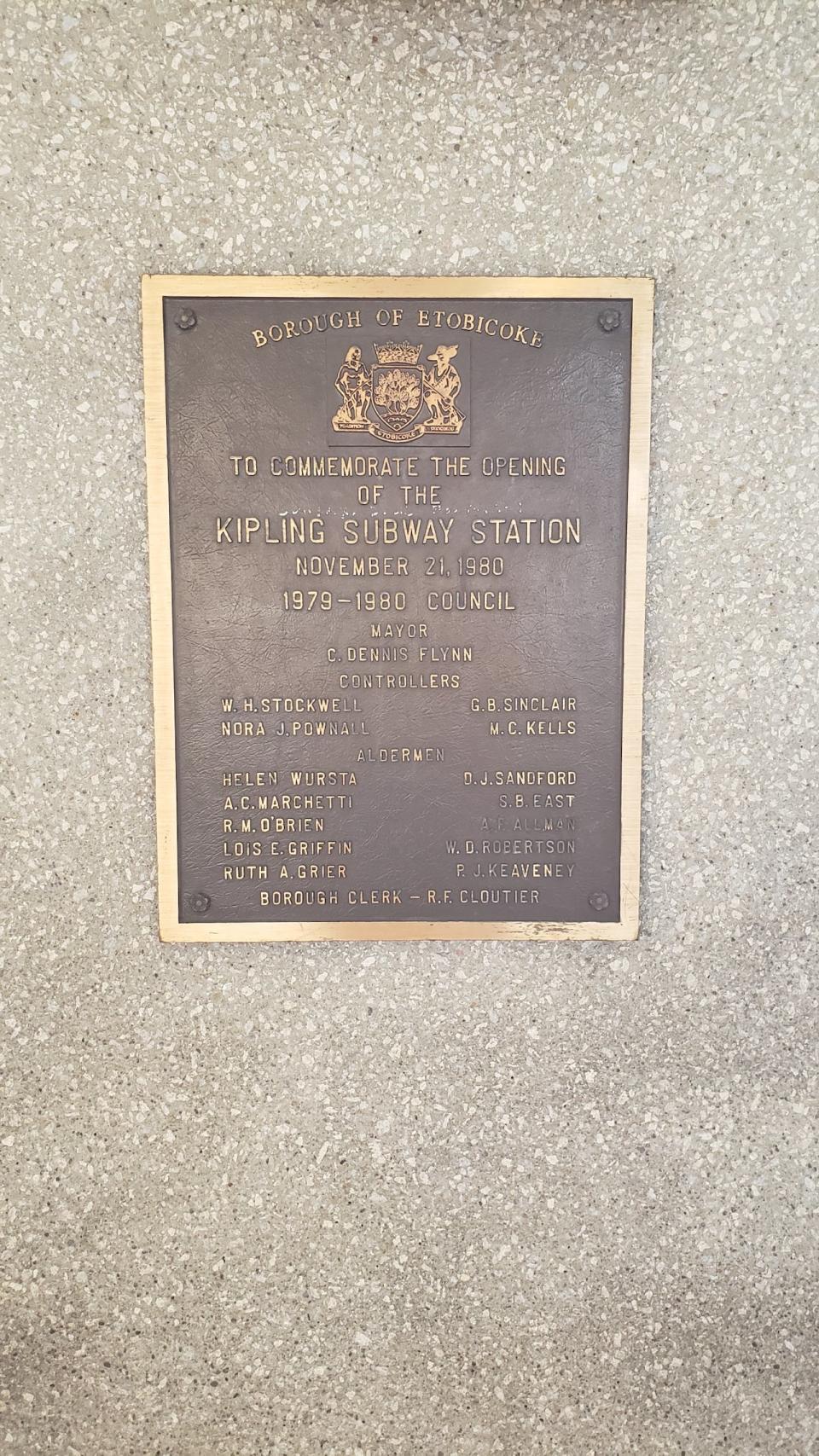
Holyday says the coat of arms exists in many places around the city, including in the Kipling TTC station, where it's part of a memorial plaque. (TTC Image)
CBC Toronto has requested comment from Mayor Olivia Chow's office. This story will be updated if a response is received.
"The coat of arms was used on the official seal of the former City of Etobicoke and has been used extensively from 1977 until amalgamation in 1998, both in physical form and on numerous documents and mediums," Holyday's motion states. "It is recognized and highly regarded by many."
City staff say no date has yet been set for the removal of the coat of arms.


